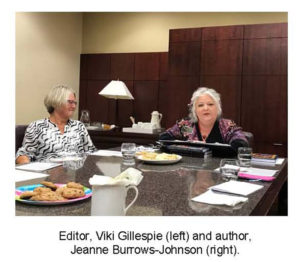Acknowledging our mentors is a key authoring strategy!
There are so many aspects to the art and science of writing that it is easy to lose focus of mechanical details while completing a project. Empowering your words fully means having access to our mentors and technical experts for fiction as well as non-fiction. Sometimes when we think of the people who’ve advised us about our work—or regarding life in general—it’s difficult to remember them all. But the demands of book publishing eventually require authors to compose an acknowledgments section. Beyond being a gracious act, it can be a key authoring strategy in gaining the respect of those who help you, as well as your readership.
In my own experience, I have learned that it is not good to wait until the end to begin documenting everyone who has contributed to your final product. The simplest solution to this aspect of the editorial process is to keep notes on the people and organizations that are of assistance to us as a project develops. As I have moved from Prospect for Murder to Murder on Mokulua Drive, and from Murders of Conveyance to Yen For Murder, I have copied the Notes and Acknowledgment portion from one manuscript into the next. After removing references that are not pertinent to the current work, I continue to make quick notes as I progress through each book. By the end of a project, I may not have beautifully composed text, but I have complete references that will allow me to polish the section.
The easiest citations to track are for people connected to a library, institution, or government agency. Of course, such organizations often have considerable turnover in staff. That means you’ll need to verify whether a person remains in the job you’ve cited. Strategically inserting a phrase like “at the time” allows you to recognize a person’s help, even if you cannot verify their position as you go to press.
During a professional writer’s research, some individuals will provide meaningful counsel for several years. In my case, this category of advisers includes both generalists and specialists. Having described my protagonist Natalie Seachrist as the widow of a naval officer, I’m fortunate to have a husband who is a retired Lieutenant Commander. When unexpected questions about ships and naval protocols have arisen, he’s been able to answer them quickly at unusual times.
There are also people whose contributions move beyond their specific area of expertise. For example, the late Kevin C. Horstman, PhD (who specialized in geological sciences and digital image enhancement) has shared concise knowledge of the realm of geology. In addition, he’s provided understanding of geographical features and general scientific terminology. This invaluable input strengthens my ability to write descriptively, and has inspired writing of passages I had not foreseen.
Through appendices and footnotes, an author can reference the contributions of such technical, scientific, or artistic professionals in non-fiction pieces. Unfortunately, this is not appropriate to most works of fiction. However, fictional wordsmithing can utilize prefatory remarks, or dedication of a book or other major work to recognize such people. For even if you do not realize it, a reader’s expectations usually includes a desire to gain insight into how you have researched and shaped the work you are presenting to them. This is particularly true in the case of a series in which you will hope to gain a following from one book to the next.
Audio books require additional levels of attention to enhance the sensory experience of listeners. As I prepared to produce the audio recording of Prospect For Murder, I remained alert to aspects of production that could fulfill a listener’s expectations. A major consideration was providing precise chapter breaks, so that listeners know where they are within an audio book. It was also important to provide a distinct voice for each character. As someone trained in the theatre arts, I know it is easy for a solo performer to become confused in presentation of multiple characters.
Fortunately, I work with Jim Waters of Waterworks Recording. His experience in audio production positioned him to serve effectively as my director, as well as my recording producer and engineer. One of the best formatting tips he shared with me for preparing recording scripts was ensuring each page concluded with the end of a paragraph and/or an individual character’s voice. In addition I utilized various formatting to indicate how each passage was to be read.
As this first book in the Natalie Seachrist series reached its release date at the end of July 2016, I prepared Internet announcements through Https://www.ImaginingsWordpower.com, plus a new author website, Https://www.JeanneBurrows-Johnson.com and a Facebook page designed as a simple billboard for announcements. For these and other purposes, I’ve needed a professional photograph to accompany cover art and promotional text. This task seemed straight forward. However, on the day of the shoot, the weather was muggy, the activity took place in a space using evaporative cooling rather than air conditioning, and I was definitely having a bad hair day.
Perhaps I should have paid a cancellation fee and rescheduled the event. But with deadlines looming, I proceeded. At the end of the shoot I learned that the digital photographic firm could make image enhancements…at $35 for each element they adjusted. By the time I would have had them amend several parts of the picture I’d selected, I could have spent as much as for the shoot itself. Fortunately, a friend’s daughter, provided graphic art fixes. While this valuable service does not fall within a normal range of publishing credit, in the future she may become one of my advance readers, and I’ll be able to acknowledge her professional services in my notes section.
In summation, there are varied means by which you can thank and give credit to those who help you present your thoughts to the public!
Wishing you the best in your creative endeavors,
Jeanne Burrows-Johnson, author, consultant, and motivational speaker
To learn more about the award-winning Natalie Seachrist Hawaiian Mysteries, including Murders of Conveyance [Winner, Fiction Adventure-Drama, 2019 New Mexico-Arizona Book Awards] and other projects, please drop in at my author’s website JeanneBurrows-Johnson.com. You’ll even find Island Recipes that might inspire your culinary creativity.
For more ideas to strengthen your Wordpower© and branding, please visit: Imaginings Wordpower and Design Consultation.
Follow Me:
Amazon, Arizona Authors Association, Apple Books
Audible, Authors Den, Barnes and Noble, Blogarama, Book Bub
Cozy Mysteries-Unlimited, Facebook, Good Reads, Hometown Reads
Book sellers may contact book distributors such as:
Baker & Taylor, Follett, IPG, Ingram, Mackin, Midpoint, TitleWave



